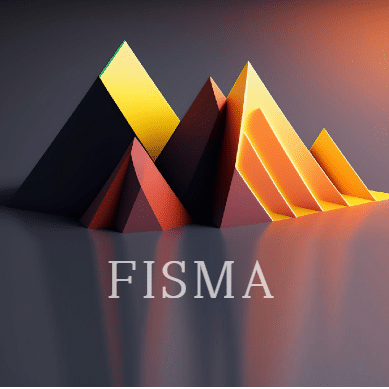Audit evidence lies at the heart of cybersecurity audits and assessments, providing tangible proof of an organization’s adherence to cybersecurity measures.
Being secure is not merely about having a secure infrastructure; it’s about ensuring that every aspect of that security is verifiable and transparent. Today, we’ll delve into a pivotal element of this process: audit evidence. Evidence in auditing transforms the abstract notion of security into a tangible reality that can be confidently presented to the world.

Understanding the Role of Audits
Cybersecurity audits serve as a systematic examination of an organization’s information systems, policies, and practices. These evaluations aim to identify vulnerabilities, assess controls, and ensure compliance with industry standards and regulations. Audits provide a proactive approach to cybersecurity, allowing organizations to strengthen their defenses and adapt to emerging threats.
The Vital Role of Audit Evidence
Audit evidence is the backbone of any audit process, offering tangible documentation and proof of an organization’s adherence to established cybersecurity measures. This evidence serves multiple purposes, including:
- Verification of Controls: Auditors rely on evidence to verify the existence and effectiveness of cybersecurity controls, from access management to encryption mechanisms.
- Compliance Assurance: Evidence is crucial in demonstrating compliance with industry-specific regulations and standards, safeguarding organizations from legal consequences, and enhancing overall security posture.
- Risk Management Assessment: Through evidence collection, auditors assess an organization’s risk management processes, ensuring they are proactive, comprehensive, and aligned with its risk appetite.
- Continuous Improvement: Evidence gathered during audits provides a basis for continuous improvement, allowing organizations to adapt cybersecurity practices to emerging threats and technologies.
Types of Audits
Now that we’ve established the role of audits and evidence let’s explore the diverse types of audits organizations may undergo:
- Internal Audits
The organization’s internal audits assess controls, governance processes, risk management strategies, and compliance status.
- External Audits
Mandated by international or federal standards like ISO 27001 or SOC 2, external audits involve independent third parties evaluating the implementation of standard requirements.
- Compliance Audits
Focused on ensuring adherence to specific regulations, compliance audits verify that an organization follows industry-specific rules and standards.
- Risk Assessments
These audits identify and mitigate potential threats and vulnerabilities, ensuring organizations are well-prepared for cyber risks.
Types of Audit Evidence
Audit evidence is the cornerstone of cybersecurity assessments, offering tangible proof of an organization’s adherence to policies, implementation of controls, and overall security posture. As auditors delve into various aspects of cybersecurity, different forms of audit evidence contribute to a comprehensive evaluation.
Documentary Evidence:
Tangible and straightforward, documentary evidence encompasses policies, procedures, and documentation related to information security controls.
Examples include security manuals, access control lists, and incident response plans, providing a documented basis for the existence and implementation of cybersecurity measures.
Observational Evidence:
Observation evidence Involves direct scrutiny and assessment of cybersecurity practices, controls, and activities.
Auditors observe the real-time implementation of security protocols, access controls, and encryption processes, gaining insights into effectiveness and adherence.
Physical Evidence
As its name suggests, physical evidence pertains to tangible aspects of information systems, including hardware devices, servers, and physical security measures.
Auditors inspect servers, network infrastructure, and other physical components to verify security configurations and protection against physical threats.
Analytical Evidence
Analytical evidence Involves examining and analyzing data to identify patterns, trends, or anomalies.
Auditors leverage analytical tools to assess log files, network traffic, and system behavior, uncovering irregularities or potential security breaches.
Testimonial Evidence
Testimonial evidence is derived from statements and interviews with individuals involved in the organization’s cybersecurity practices.
It provides insights into the organization’s understanding, awareness, and adherence to cybersecurity policies.
Reperformance Evidence
This involves independently executing or reproducing certain cybersecurity controls or processes to validate their effectiveness.
Auditors perform security tests, penetration testing, or vulnerability assessments to ensure robust controls capable of withstanding potential threats.
Electronic Evidence
Digital data stored on systems, servers, and networks, including log files, configuration settings, and other digital artifacts, encompass this category.
Forensic tools and techniques are used to collect and analyze electronic evidence, reconstruct events, and assess the impact of security incidents.
Third-Party Evidence
In some cases, auditors may rely on evidence provided by external parties, such as penetration testing reports or security certifications.
External validation adds a layer of assurance and an independent perspective on the effectiveness of cybersecurity controls.
Start Getting Value With
Centraleyes for Free
See for yourself how the Centraleyes platform exceeds anything an old GRC
system does and eliminates the need for manual processes and spreadsheets
to give you immediate value and run a full risk assessment in less than 30 days
Overview of Audit Process and Evidence Requirements
ISO 27001
ISO 27001 certification involves a comprehensive audit process to assess an organization’s Information Security Management System (ISMS). The audit includes reviewing the organization’s risk assessment and treatment plan, information security policies, access controls, and incident response procedures. Organizations typically present documentation such as risk registers, information security policy documents, access control logs, and incident response plans to provide evidence. The audit ensures that the organization has implemented a robust ISMS and is committed to managing information security risks effectively.
PCI DSS
PCI DSS compliance audits evaluate an organization’s adherence to the Payment Card Industry Data Security Standard. The process thoroughly examines firewall configurations, cardholder data protection measures, and security awareness training records. Organizations must present evidence such as firewall rule change requests, encryption key management records, and employee training attendance sheets. The audit aims to verify that the organization securely handles cardholder data, implements adequate access controls, and maintains a culture of security awareness.
HIPAA
HIPAA compliance audits assess healthcare organizations’ efforts to safeguard protected health information (PHI). The audit includes reviewing risk analysis, data access controls, encryption procedures, and physical security controls. Organizations provide evidence through risk assessment reports, access logs, encryption key management records, and surveillance system documentation. The audit ensures that the organization has implemented measures to protect PHI and complies with the HIPAA security rule.
GDPR
GDPR compliance audits assess how organizations handle personal data and comply with data protection regulations. The audit process includes a review of data processing records, data protection impact assessments (DPIAs), and records of data subject consents. Evidence presented by organizations includes data processing registers, DPIA reports, and consent forms. The audit aims to confirm that organizations are transparent in their data processing activities, conduct thorough impact assessments, and obtain valid consent from data subjects.
SOC 2
SOC 2 audits evaluate the controls and processes relevant to an organization’s systems’ security, availability, processing integrity, confidentiality, and privacy. The audit encompasses reviewing information security policies, change management processes, and incident response and monitoring activities. Organizations provide evidence through policy documentation, change logs, and incident response logs. The audit ensures that the organization has implemented adequate controls to secure and manage its systems by the Trust Service Criteria.
Centralized Risk and Compliance Platform
Implementing a centralized risk and compliance platform can significantly enhance the efficiency of audit evidence collection across various standards. Such a platform serves as a unified repository for all audit documentation and evidence required. It allows organizations to streamline risk management processes, document control measures, and monitor compliance activities.
With a centralized platform, auditors can easily access and review the necessary evidence, reducing the time and effort required for manual data gathering. Automation features within the platform can facilitate real-time updates to policies, risk assessments, and other relevant documents, ensuring that the evidence presented is always current.
Most importantly, a centralized platform promotes collaboration among departments involved in compliance efforts, fostering a more integrated and organized approach to audit preparation.
Best Practices for Audit Evidence Collection
Document Regularly and Thoroughly
Regularly update and maintain comprehensive policies, procedures, and risk assessment documentation. Ensure all changes and updates are well-documented to provide a clear audit trail.
Implement Automation
- Leverage automation tools within a centralized platform to automate data collection, analysis, and reporting processes. Automation reduces the likelihood of human error and ensures consistency in evidence presentation.
Maintain Version Control
- Implement a version control system to track changes in policies and procedures. This ensures that auditors can easily trace the evolution of documents over time and assess the organization’s commitment to continuous improvement.
Organize Evidence Clearly
- Structure evidence in a logical and easily navigable manner. Use well-defined categories and labels to make it simple for auditors to locate appropriate and sufficient audit evidence.
Cross-Functional Collaboration
- Foster collaboration among different departments involved in compliance. Establish clear communication channels to facilitate the exchange of information and ensure that evidence collection is a collective effort.
Regular Training and Awareness
- Conduct regular training sessions to inform employees of compliance requirements and the importance of evidence documentation. An informed and trained workforce is more likely to contribute to successful audits.
Conduct Mock Audits
- Periodically conduct internal mock audits to simulate the actual audit process. This helps identify potential gaps in evidence collection and provides an opportunity to refine processes before facing external audits.
Engage External Auditors Early On
- Engage with external auditors early to understand their expectations and requirements. This proactive approach allows organizations to tailor their evidence-collection strategies to meet specific audit criteria.
Continuous Monitoring
- Implement continuous monitoring mechanisms to track compliance in real time. This helps organizations identify and rectify issues promptly, ensuring that evidence remains up-to-date and reflects the current state of compliance.
Regular Review and Improvement
- Periodically review the effectiveness of evidence collection processes and seek feedback from auditors. Use insights gained to continually improve documentation practices and enhance the efficiency of future audits.
How Centraleyes Helps Your Audit Preparation
The Centraleyes platform acts as a nerve center of an audit. It’s a unified repository for all audit documentation and evidence required. By streamlining risk management processes, document control measures, and compliance activities, Centraleyes facilitates efficient evidence collection.
Centraleyes grants teams and auditors swift access to necessary evidence, reducing manual efforts, and its automated audit evidence characteristics and features ensure real-time updates to policies and risk assessments. Collaboration among departments is fostered, creating an integrated and organized approach to audit preparation.
Show Me, Don’t Tell Me!
In mastering audit evidence collection, let’s ensure that your security efforts are not just told but are validated and upheld.
Start Getting Value With
Centraleyes for Free
See for yourself how the Centraleyes platform exceeds anything an old GRC
system does and eliminates the need for manual processes and spreadsheets
to give you immediate value and run a full risk assessment in less than 30 days






